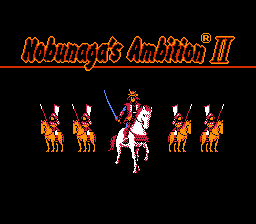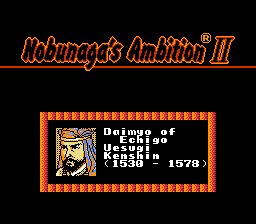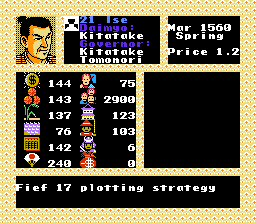Nobunaga's Ambition II for NES
NESGame controls in browser
Show Controller & SystemClick on play NES game now button first to load the game into emulator. Control keys:
Nobunaga's Ambition II
Online version of Nobunaga's Ambition II for NES. The sequel to Nobunaga's Ambition is a much more sophisticated than the first one. The game returns to the concept of generals (samurai here), similary to Romance of Three Kingdoms. The game takes place in Japan, of course, is a typical turn-based strategy from KOEI, so the map is divided into regions, which are gradually conquering by player, improving agriculture, economy and castles, bribing generals, recruits army and trains. Individual territories are administered by the generals and should therefore be careful to choose those who have the best statistics ...
Game details
Other platforms online 1
You can play Nobunaga's Ambition II online also in a versions for62%
rating (17 users voted)
Covers - Box Art
NES Console
Online emulated version of Nobunaga's Ambition II was originally developed for the Nintendo Entertainment System (NES), an 8-bit third-generation home video game cartridge-based console produced by Nintendo, first released in Japan as the Family Computer (commonly known as the Famicom) in 1983. The NES, a face-lifted version, was released internationally in the following years. The NES featured a number of groundbreaking games, such as the platform game Super Mario Bros, the action-adventure game The Legend of Zelda and the action game Metroid. As one of the best-selling gaming consoles of its time, the NES helped revitalize the US video game industry following the video game crash of 1983.
The game controller used for both the NES and the Famicom features an oblong brick-like design with a simple four button layout: two round buttons labeled `A` and `B`, a `START` button, and a `SELECT` button. Additionally, the controllers utilize the cross-shaped joypad, designed by Nintendo employee Gunpei Yokoi, for Nintendo Game & Watch systems, to replace the bulkier joysticks on earlier gaming consoles' controllers.







